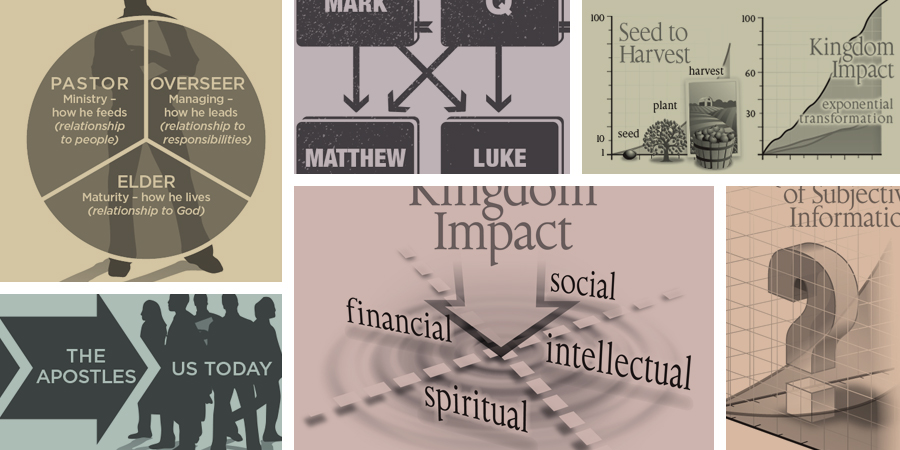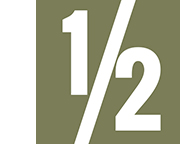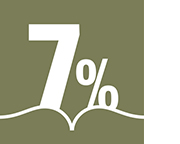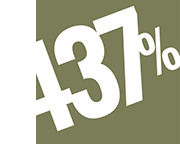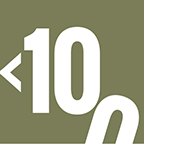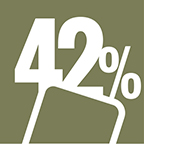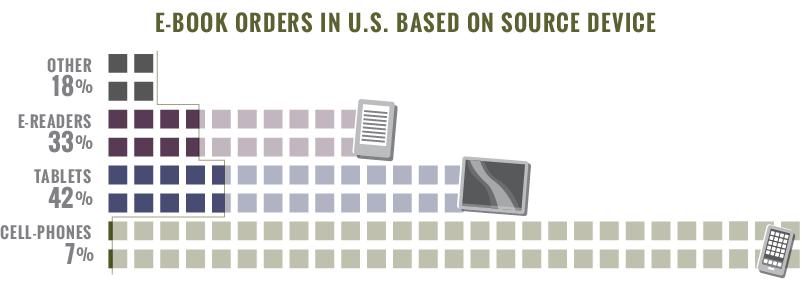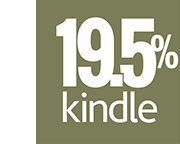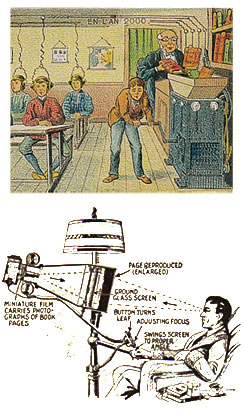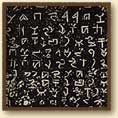Comments:
0 |
Posted by: dcorpsmen
First let me say that there are two free PDFs that you can either download now or wait and do it at the end of this article. They provide a wealth of interesting and accessible information on the generations in two fun formats. Click HERE to download our “Understanding the Generations” Infographic PDF. Click HERE to download our “Understanding the Generations” Trading Cards PDF.
Generational Shifts and Their Causes
You have probably heard the quote: “You do not truly understand a person until you walk a mile in their shoes.” We are all so different. In addition to our personal idiosyncrasies, there are differences that stem from our nationality, our culture, our gender, etc. It starts to add up to a lot of walking.
But when it comes to understanding different generations the best way to “walk a mile in their shoes” is to reflect on history. Specifically, we need to try to understand a generation by looking at the decades in which they came-of-age. For example, many Traditionalists were born at the start of the Great Depression and came of age during WWII. Many Baby Boomers grew up in an era of unprecedented affluence but also marked with social upheaval and lack of trust in the government, while the Millennial generation grew up with the internet.
Affluence or economic upheaval, war or peace, social conformity or counter culture: these create a huge difference in a generation’s psyche. Along with the more earth-moving events there are also the subtle but constant changes in popular culture through entertainment trends, news headlines, or technological advances. Understanding these eras can be a great benefit to understanding, and getting along with, the people of other generations.
Generally Recognized Demarcations of Generations
Although names and dates vary, the consensus is that there are four different generations currently active in the work force today. These are most commonly referred to as:
– Traditionalists (born 1929 to 1945),
– Baby Boomers (born 1946 to 1964),
– Generation X (born 1965 to 1982), and
– Millennials or Generation Y (born 1983 to 2001).
One source reported that, as of 2012, the workforce was composed of the following percentages of generations: “(Traditionalists) make up 5%-6%; Baby Boomers, 43% – 46%; Gen X, 30%- 40%; and Gen Y, 15% – 20%.” 3 Each generation has attributes that can greatly benefit an organization. But also weaknesses. We may need to admit our own generational perspectives with its inherent flaws and blind spots if we are to appreciate all the generations and grow as well. Below is a list that can give you a rough idea of characteristics that one may find in each generation.
 Traditionalists (born 1929 to 1945):
Traditionalists (born 1929 to 1945):
Grew up in the Great Depression and WWII “and were raised with strict regimen that taught them to value quality, respect, and authority.”5
– tend toward patriotism
– respect for authority, rules, and conformity
– loyalty to company
– success is from hard work, dedication, and perseverance,
– rationing, thrift, and spending wisely
– believe in division of labor
– duty before fun 5
– value discipline, working toward a greater good, and traditional values 2
– like messages that convey respect and appreciation 2
– clear distinction between boss and worker 5
 Baby Boomers (born 1946 to 1964):
Baby Boomers (born 1946 to 1964):
Grew up or came of age in the most financially secure and affluent time recorded in the USA — 1964 to 1982. They “embraced value of having to sacrifice to get ahead. That sacrifice made them very loyal to their employers and colleagues.” 5 Also grew up with the paranoia of the cold war with its threat of nuclear annihilation.
– distrust of government 2
– individualistic and self-empowered, 2
– competitive
– seek personal gratification
– interest in health & wellness 5
– always learning 5
– workaholics 5
– job status and symbols important 5
– focus in workplace on process and output not implications and outcomes 5
– of the four generations they have the most disposable income 2
– prefer face to face communication 5
 Generation X (born 1965 to 1982):
Generation X (born 1965 to 1982):
“Grew up without the safety net of a flourishing economy”2. Many “were latchkey children who watch(ed) their parents forge a new work environment, they were the first generation to grow up with computer technology. They care more about productivity than they do about the number of hours spent on the job.” 5
– tech savvy
– widespread cynicism, distrust of institutions
– world weary, pessimistic, skeptical,
– pragmatic, independent, self-reliant
– knowledge seeking & sharing 1
– balance work and family 5
– like to have fun at work, prefer flexible work hours and informal work environment 5
– more focused on earning a living than staying loyal to a company 2
– less work-focused than previous generations 2
– like to get the most out of their money 2
– approach authority casually 5
– focus in workplace on relationships, outcomes, their rights and skills 5
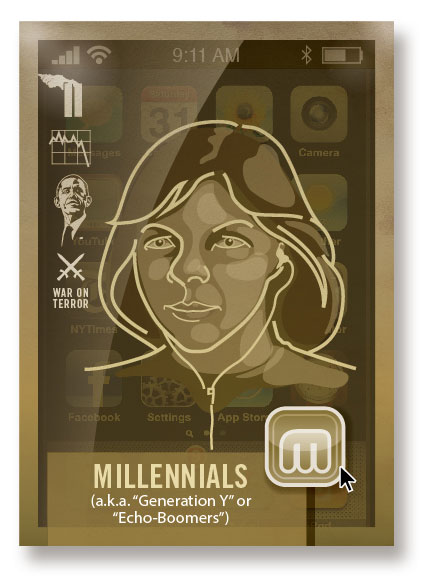 Millennials (also known as Generation Y) (born 1983 to 2001):
Millennials (also known as Generation Y) (born 1983 to 2001):
“Grew up without the safety net of a flourishing economy”2. Also grew up with the internet. They “are entrenched in technology. They multi-task, and bore easily. They understand how to maximize and leverage new technology better then any generation before them, and they value a balanced life style.” 5
– goal-setting a priority 5
– team players,
– political 5
– respect norms & institutions
– technology-based peer community, connected, generation of e-everything
– a complex, extremely diverse group, global, multicultural
– exist to consume, materialistic
– confident, opinionated, self-reliant, optimistic and positive
– empowered by their command of digital technologies 1
– incredibly tech-savvy 2
– accepting of alternative lifestyles 2
– self-absorbed 2
– more optimistic as entrepreneurs 2
– appreciates humor, creativity, and image 2
– trust internet more than direct-mail 2
Understanding the Generations is Different from Understanding Individuals
One book critic on Amazon has cited that the use of generational personality is “gross stereotyping”7. And it is true if it is misapplied. But the point we are making is that we need to try to understand where people are coming from. We are not trying to make them all fit in one category. As a person born in 1964, I find I identify much more with the Traditionalists in some areas than I do with Baby Boomers or Generation X. In other areas I identify with the characterization of other generations. As individuals we all are unable to be stereotyped. But when looking at population segments these differences are undeniable.

Summary and Tools
No matter your role, in work or society, it is good to realize just how varied different generations can be. There have been a lot of articles done on marketing to different generations — and we have included some links below — but here we simply want to offer you tools that can summarize the generational differences. So, along with the list above, we have created an info-graphic that shows a timeline of major events that influenced each generation as well as shows changes in the work place.
Look around you at those you know best from other generations. An easy place to start is with your parents, grandparents, children, or grandchildren. If they ever seem to have expectations that seem different, outdated, or just plain bizarre, it could be because they are reasoning according to the context of their generation’s values and perspectives. These perspectives of other generations could prove to be a real benefit to ourselves. We should all try putting on a little humility next time we are with someone from another generation and see what we can learn from them. It might surprise each of us.
FREE Resources
As mentioned at the beginning of this article, we would love to share with you some free resources we have designed that present the information in this article in a fun and easily accessible way. There is our “Understanding the Generations” infographic which presents the experiences, characteristics, and birth statistics of the different generations all on one page. Or you can download and print out the “Understanding the Generations” trading cards that we have designed for each generation.
Click HERE to download for free our “Understanding the Generations” Infographic PDF.
Click HERE to download for free our “Understanding the Generations” Trading Cards PDF.
Enjoy, and vive la différence!
1 – ROCG, 2007, http://rocg.com/?post=who’s-your-daddy-marketing-to-different-generations
2 – YAHOO! Small Business Advisor, September 5th, 2013, http://smallbusiness.yahoo.com/advisor/tailor-content-marketing-strategy-different-generations-210059440.html
3 – http://www.washingtonexec.com/2012/01/a-conversation-with-lisa-martin-marketing-to-four-generations/
4 – Lynne Lancaster and David Stillman, “When Generations Collide: Who They Are. Why They Clash. How to Solve the Generational Puzzle at Work”, HarperBusiness; Reprint edition (March 4, 2003)
5 – Mary Mack TASC Conference PDF, http://www.clemson.edu/t3s/workshop/2010/TASC/20Pres/4/20Generations/20In/20Workplace/20TASC/202010.pdf
6– chart content from “The Rest of the Story with Rob Gurwitt, How Generation X is Shaping Government”, Posted by Kent Wyatt on May 20, 2013 at 10:53am, “http://www.govloop.com/profiles/blogs/the-rest-of-the-story-with-rob-gurwitt-how-generation-x-is”
7– “A Trendy Idea That is Wrong”, a review of the book When Generations Collide: Who They Are. Why They Clash. How to Solve the Generational Puzzle at Work by Nero J. Pruitt on May 13, 2002, Amazon.com (found on November 9th, 2013.)
also: http://www.pewsocialtrends.org/2010/02/24/millennials-confident-connected-open-to-change/
Read more →
 We began in 1996. So, in case you have forgotten, below are some facts and figures about what was happening back then in the headlines and in pop culture.
We began in 1996. So, in case you have forgotten, below are some facts and figures about what was happening back then in the headlines and in pop culture. 



